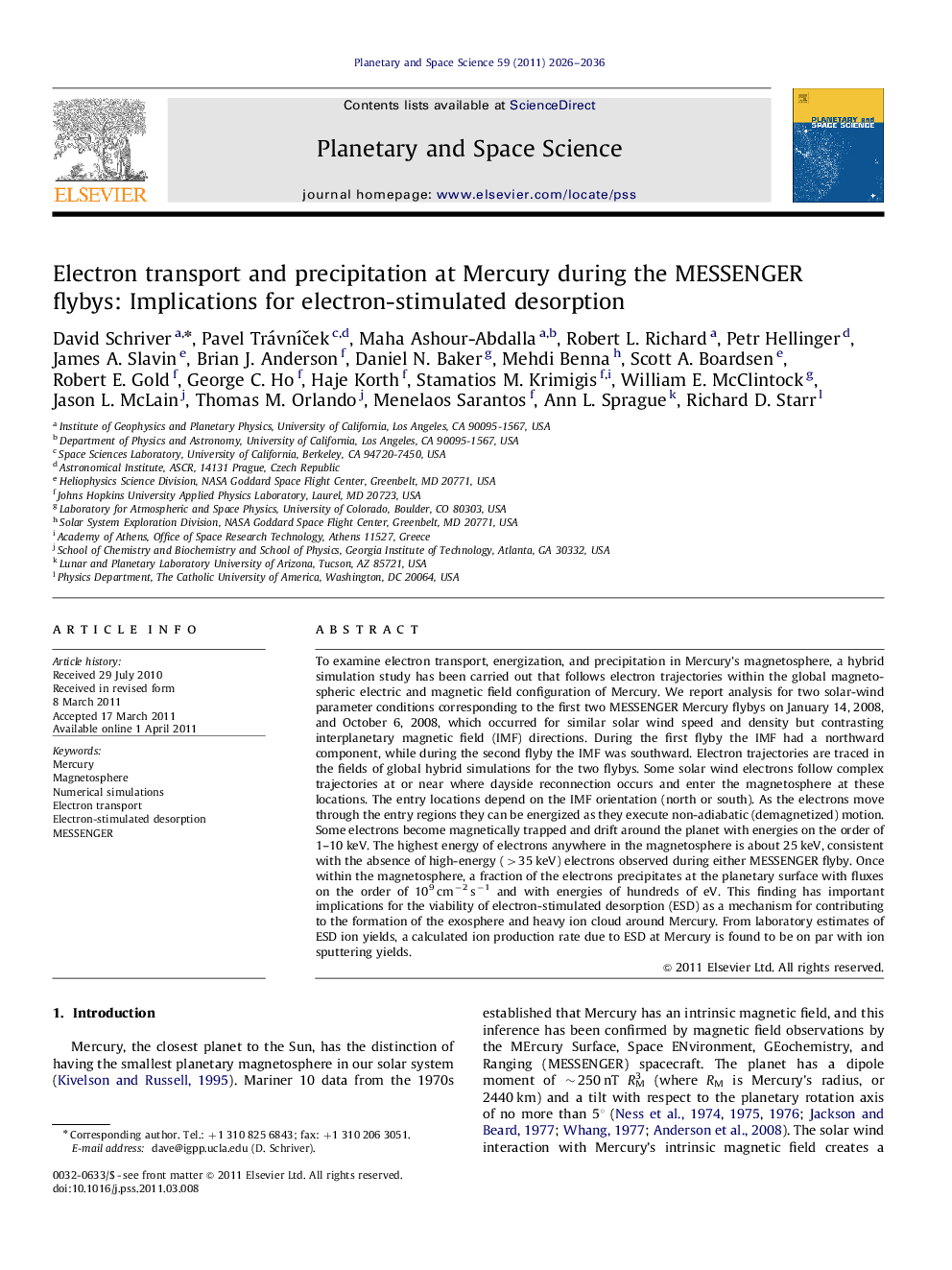| کد مقاله | کد نشریه | سال انتشار | مقاله انگلیسی | نسخه تمام متن |
|---|---|---|---|---|
| 1781609 | 1022292 | 2011 | 11 صفحه PDF | دانلود رایگان |

To examine electron transport, energization, and precipitation in Mercury's magnetosphere, a hybrid simulation study has been carried out that follows electron trajectories within the global magnetospheric electric and magnetic field configuration of Mercury. We report analysis for two solar-wind parameter conditions corresponding to the first two MESSENGER Mercury flybys on January 14, 2008, and October 6, 2008, which occurred for similar solar wind speed and density but contrasting interplanetary magnetic field (IMF) directions. During the first flyby the IMF had a northward component, while during the second flyby the IMF was southward. Electron trajectories are traced in the fields of global hybrid simulations for the two flybys. Some solar wind electrons follow complex trajectories at or near where dayside reconnection occurs and enter the magnetosphere at these locations. The entry locations depend on the IMF orientation (north or south). As the electrons move through the entry regions they can be energized as they execute non-adiabatic (demagnetized) motion. Some electrons become magnetically trapped and drift around the planet with energies on the order of 1–10 keV. The highest energy of electrons anywhere in the magnetosphere is about 25 keV, consistent with the absence of high-energy (>35 keV) electrons observed during either MESSENGER flyby. Once within the magnetosphere, a fraction of the electrons precipitates at the planetary surface with fluxes on the order of 109 cm−2 s−1 and with energies of hundreds of eV. This finding has important implications for the viability of electron-stimulated desorption (ESD) as a mechanism for contributing to the formation of the exosphere and heavy ion cloud around Mercury. From laboratory estimates of ESD ion yields, a calculated ion production rate due to ESD at Mercury is found to be on par with ion sputtering yields.
► Global simulations are used to examine electron dynamics at Mercury's magnetosphere.
► Magnetospheric electrons are energized by non-adiabatic and betatron acceleration up to 25 keV.
► Electrons that precipitate at Mercury's surface have fluxes 109 cm−2s−1 and energies 0.1−1 keV.
► Electron-stimulated desorption by precipitation causes 1021 –1023 ions/s emission off the planet.
Journal: Planetary and Space Science - Volume 59, Issue 15, December 2011, Pages 2026–2036